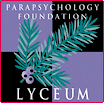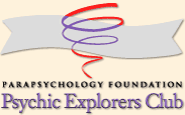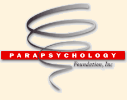 |
 |
| Discussions on hallucinations at the Congress consisted basically on reports of the work of the Society for Psychical Research on the Census of Hallucinations, of which preliminary results were discussed that same year by Henry Sidgwick (1889a, 1889b) in the SPR Proceedings. The French researcher Léon Marillier presented a paper on the Census in which he stated: The Society for psychological research (of London) [actually, the Society for Psychical Research] has conducted a survey of hallucinations whose main purpose is to determine the frequency of the phenomenon in normal individuals. The hallucinations of the insane and of hysterics, hallucinations during the delirium of fever, the hallucinations that are the result of an intoxication, [and] hypnagogic hallucinations, are outside of this research (Marillier, 1890a, p. 13, my translation). Later on, the same author stated: “The statistics of hallucination … seem to establish that frequent coincidences exist between the hallucinations and real facts” (Marillier, 1890b, p. 44). This was a reference to a controversial topic, the SPR’s work suggesting that some hallucinations were veridical. Following on their already classic study Phantasms of the Living, authored by Edmund Gurney with Frederic W. H. Myers and Frank Podmore (1886), they argued that the mind expressed telepathically acquired messages through hallucinations. As Richet put it during the Congress, veridical meant that the hallucinations were “related to a real fact unknown to the person having the hallucination” (Richet, 1890, p. 33). Many of these veridical hallucinations coincided with the distant death of another individual, usually a close family member of friend of the percipient. A later discussion following the same topic took place during the Congress on August 10th. Richet stated that some members of the Congress wanted to talk about the phenomenon of “transmission of ideas.” Janet suggested that since some SPR members were present, they could summarize their studies, a task taken on by Myers. While Myers was positive about the existence of thought-transference, he was clear that the results could not be repeated at will. Richet stated that he was familiar with the SPR work and that his own work was consistent with their results. “If such mental transmission is true,” he wrote, “it will constitute … one of the greatest discoveries of the times” (Statistique des Hallucinations, 1890, p. 153). Gurney, E., Myers, F. W. H., & Podmore, F. (1886). Phantasms of the living (2 vols.). London: Trübner. Marillier, L. (1890a). Étude statistique des hallucinations. Congrès International de Psychologie Physiologique (p. 13). Paris: Bureau de Revues. Marillier, L. (1890b). Statistique des hallucinations. Congrès International de Psychologie Physiologique (pp. 44-47). Paris: Bureau de Revues. Richet, C. (1890). Les travaux du Congrès de psychologie physiologique. Congrès International de Psychologie Physiologique (pp. 32-38). Paris: Bureau de Revues. Sidgwick, H. (1889a). Address by the President on the Census of Hallucinations. Proceedings of the Society for Psychical Research, 5, 7-12. Sidgwick, H. (1889b). An interim report on the Census of Hallucinations. Proceedings of the Society for Psychical Research, 5, 183-185. Statistique des Hallucinations. (1890). Congrès International de Psychologie Physiologique (pp. 151-157). Paris: Bureau de Revues. |
 |

|
 www. parapsychology. org |
||